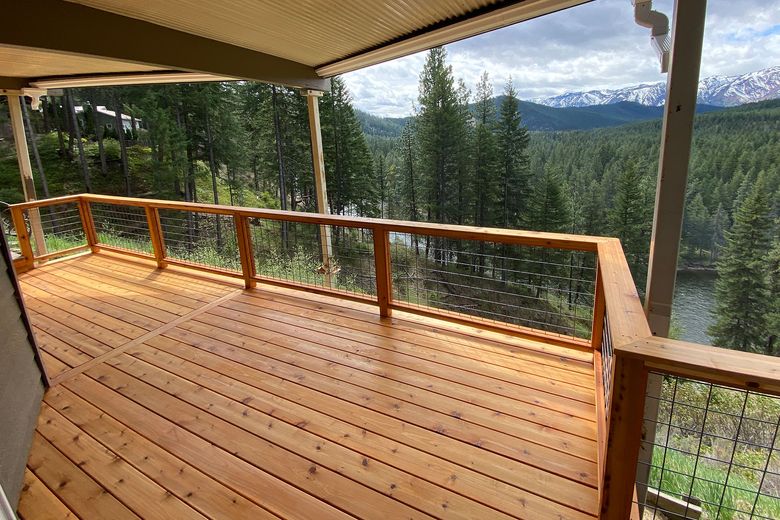
Cedar is a beautiful material that can be distinguished with age. To help preserve its beauty, stain the automatic wooden gate.
Penetrating stains soak into pores to keep out moisture and prevent organic growth like mildew, mold, and algae. They last several years before needing a refresh. Lightly tinted stains provide color while allowing the natural cedar grain and blemishes to shine.
Use a Semi-Transparent Stain
If your deck looks dull, it’s time to apply a new coat of penetrating stain. An excellent way to tell is by pouring water on a shady spot on the deck. If the water disappears in less than five minutes, the wood is ready for a fresh coat of stain that can provide additional protection.
Consider the look you want when selecting a color for your cedar deck. Transparent stains are tinted to your specifications and allow the wood grain to show through, giving the deck a natural appearance. They require the most minor maintenance but must be reapplied every year.
Semi-transparent and semi-solid stains contain enough pigment to obscure most of the grain while imparting rich color, though the automatic wooden gate texture still shows through slightly. If you want your deck to blend seamlessly with the rest of your house, use a semi-opaque stain in a shade that matches your home’s trim. This will ensure a visually-unified, monochromatic look highlighting your deck’s architecture.
Apply a Lightly Tinted Stain
Depending on their opacity and transparency, stains can hide blemishes, highlight the grain, or add a bit of rejuvenation to cedar surfaces that are still in good shape. Film-forming stains tend to peel, though; this can be caused by poor prep work, water vapor getting underneath the finish and lifting it, or UV damage to the stain itself.
When staining, always work on a warm, overcast day with stable temperatures and no rain in the forecast. Staining in direct sunlight or high heat causes the stain to dry too quickly, leading to unsightly bubbles in the wood that can’t be wiped away.
Use a large natural bristle brush to spread the stain evenly across all boards to achieve the right color on your custom cedar deck, fence, or other outdoor structures. It’s also best to work in the shade, as this allows the stain to penetrate deeper into the automatic wooden gate. A tinted stain can also help prevent the sun’s damaging UV rays from bleaching your wood.
Apply a Transparent Stain
In addition to adding beauty to your deck, cedar stain helps protect it. Moisture is a problem for automatic wooden gates, leading to rot and mildew. A solid stain creates a strong coating that minimizes moisture exposure, keeping your deck in good condition for years. Concrete stains also block damaging UV rays from the sun, minimizing fading.
Transparent stains allow the natural grain of your deck to show through, and they are available in various colors. They also soak the wood, making it less slippery than paint on rainy days.
While stained wood looks beautiful, it’s important to remember that it can’t hide significant imperfections like large chips or cracks. If you have substantial damage, it’s best to use a wood brightener that opens the pores of the deck for better penetration and neutralizes any stain strippers used previously. Wood brighteners are easy to apply and don’t require any scrubbing or “elbow grease.”
Apply a Solid-Color Stain
A solid stain is a great option when your deck requires a darker appearance. While not as natural as a semi-transparent stain, it offers more protection against UV rays and moisture. This treatment also helps mask any blemishes and imperfections on the wood, making it easier to clean.
To ensure your Western Red Cedar (WRC) remains protected, apply a stain every four to five years. This is especially important if the surface of your deck faces the sun, since prolonged exposure can cause the stain to fade and the wood to deteriorate.
Choosing the right stain for your project will depend on whether you prioritize showcasing the natural beauty of the cedar or preventing moisture and UV damage. Stains with a higher level of pigment typically offer more UV protection, but they may obscure more of the grain. If you choose a pigmented stain, try to find one that is water-based rather than oil-based to minimize maintenance and reduce the risk of environmental harm.
